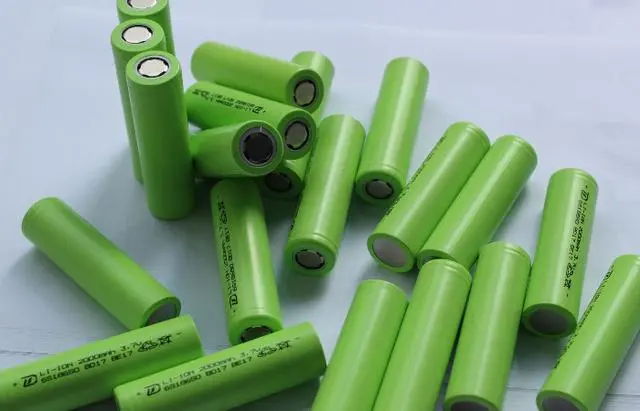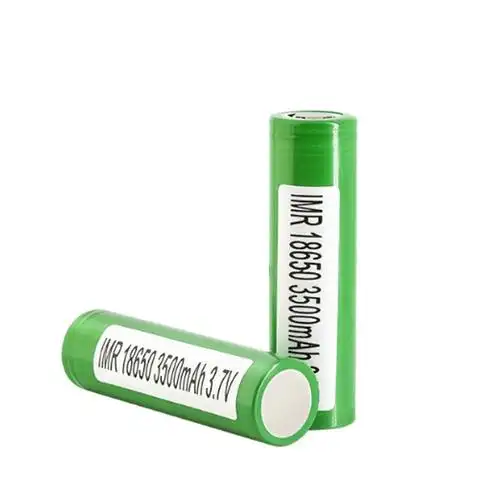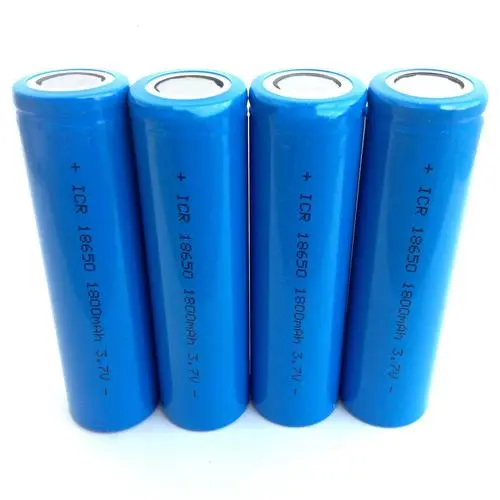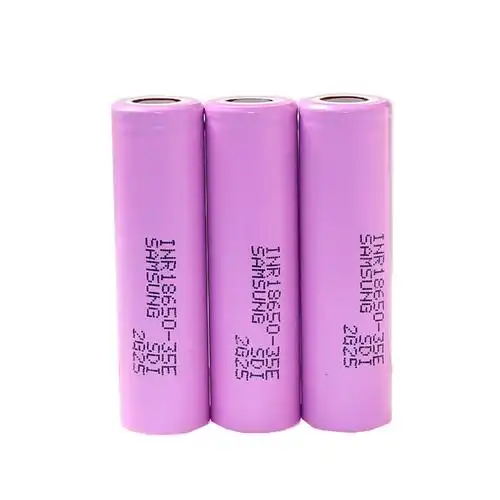Understanding the Differences Between IMR, ICR, INR, and IFR 18650 Batteries

When it comes to 18650 batteries, understanding the distinctions between IMR, ICR, INR, and IFR types is crucial for choosing the best option for specific devices. Each of these battery types has unique chemical compositions and performance characteristics, making them suitable for different applications. Below is an overview of these battery types, including their advantages, disadvantages, and primary uses.
Part 1: IMR 18650 Battery

I: Lithium (Li)
M: Manganese (Mn)
R: Round cell (R)
Chemical Composition
IMR 18650 batteries, also known as Lithium Manganese Oxide Rechargeable batteries, use lithium manganese oxide (LiMn2O4) as their cathode. This composition gives them unique safety and performance properties.
Advantages
- Enhanced Safety: IMR batteries have a safer chemistry that minimizes the risk of thermal runaway and increases stability during charging and discharging.
- Lower Internal Resistance: With lower internal resistance, IMR batteries support high discharge rates, making them ideal for high-drain devices like vaping mods and powerful flashlights.
Disadvantages
- Lower Energy Density: Compared to other types, IMR batteries generally have slightly lower energy density, which can reduce battery life for prolonged low-power applications.
Applications
- Vaping Devices: Their high discharge rates make them popular in the vaping community.
- Portable Lighting: IMR batteries are ideal for high-performance flashlights needing instant power.
- Power Tools: IMR cells provide the quick energy bursts required for power tools like drills and saws.
Part 2: ICR 18650 Battery

I: Lithium (Li)
C: Cobalt (Co)
R: Round cell (R)
Chemical Composition
ICR 18650 batteries, known as Lithium Cobalt Oxide Rechargeable batteries, use lithium cobalt oxide (LiCoO2) as their cathode, which significantly influences their performance and safety characteristics.
Advantages
- High Energy Density: ICR batteries can store a large amount of energy, making them suitable for applications that require high capacity.
Disadvantages
- Safety Concerns: ICR batteries can be unstable during high-drain use, increasing the risk of overheating.
- Lower Discharge Rates: They have limited discharge rates compared to other types, reducing their effectiveness for high-drain applications.
Applications
- Consumer Electronics: Ideal for devices like laptops and digital cameras where stable, prolonged power is needed.
- Low-Drain Devices: Suitable for gadgets that require consistent but not high power, such as certain medical devices.
Part 3: INR 18650 Battery

I: Lithium (Li)
N: Nickel (Ni)
R: Round cell (R)
Chemical Composition
INR 18650 batteries, or Lithium Nickel Manganese Cobalt Oxide Rechargeable batteries, incorporate a blend of nickel, manganese, and cobalt in their cathode, giving them balanced performance characteristics.
Advantages
- Balanced Performance: They offer a good balance between capacity and discharge rate.
- Improved Stability: INR batteries are more stable and less prone to overheating compared to ICR batteries.
Disadvantages
- Moderate Energy Density: INR batteries generally have lower energy density, impacting their overall capacity.
- Moderate Capacity: They have less capacity than high-capacity types like ICR batteries.
Applications
- Portable Electronics: Commonly used in laptops, power banks, and moderate-power tools.
- Moderate-Drain Devices: Ideal for devices like mid-range flashlights that require balanced power and capacity.
Part 4: IFR 18650 Battery

I: Lithium (Li)
F: Iron (Fe)
R: Round cell (R)
Chemical Composition
IFR 18650 batteries, known as Lithium Iron Phosphate Rechargeable batteries, use iron phosphate (LiFePO4) as their cathode, which gives them a unique safety profile and extended lifespan.
Advantages
- Enhanced Safety: IFR batteries have a highly stable chemistry, making them safe and reducing the risk of thermal runaway.
- Longevity: They are known for a longer lifespan, ideal for applications where durability is key.
Disadvantages
- Lower Energy Density: IFR batteries have lower energy density, limiting the amount of energy they can store.
- Moderate Discharge Rates: While stable, their discharge rates are generally lower, reducing their suitability for high-drain applications.
Applications
- Solar Power Storage: Their safety and durability make IFR batteries excellent for solar storage systems.
- Electric Vehicles: IFR cells are ideal for electric vehicles, providing safety and a long lifespan.
Part 5: Key Differences Between IMR, ICR, INR, and IFR 18650 Batteries
Similarities
- All Are Lithium-Ion: These batteries are part of the lithium-ion family.
- Rechargeable: They can all be recharged multiple times, extending their usability.
Differences
-
Chemical Composition
- IMR: Lithium Manganese Oxide (LiMn2O4)
- ICR: Lithium Cobalt Oxide (LiCoO2)
- INR: Lithium Nickel Manganese Cobalt Oxide
- IFR: Lithium Iron Phosphate (LiFePO4)
-
Performance Characteristics
- IMR: High discharge rates, suitable for high-drain devices.
- ICR: High capacity but lower stability under high drain.
- INR: Balanced capacity and discharge, ideal for moderate-drain devices.
- IFR: Prioritizes safety and longevity, with moderate discharge rates.
-
Applications
- IMR: Vaping mods, power tools, high-power flashlights.
- ICR: Consumer electronics, low-drain applications.
- INR: Moderate-drain electronics like laptops and power banks.
- IFR: Solar storage systems, electric vehicles.
-
Safety and Longevity
- IMR and IFR: Safer chemistries, with IFR specifically prioritizing stability and longevity.
- INR: A balanced option between safety and performance.
Edit by paco






